Which everyday plastic products are the most harmful to ocean wildlife?
Plastic has undeniably made our lives more convenient. But now the truth has been exposed – single-use plastic is flowing into the ocean at an alarming rate, entangling and killing our treasured turtles, whales and wildlife.
Have you ever wondered which type of plastic is the most harmful for ocean animals? We all want to do the right thing, but it is hard when we don’t have all the facts on plastic pollution.
We’ve done the research, and put together a list of the most harmful plastics in the ocean. By avoiding the worst plastic products, you can help us save animal lives.
10 worst single-use plastic products for ocean animals
1. Plastic Shopping Bags

Plastic bags (lightweight and heavyweight) are one of the most lethal plastic killers of ocean animals. They escape and float easily in air and water, travelling long distances.
Small animals, seabirds and even turtles get entangled in them and drown. Turtles mistake them for their favourite food, jellyfish. Once eaten, these soft plastics block their stomachs and they starve.
New research even shows plastics like these smell like food to turtles. Scientists have found plastic products in the ocean trap microbes and algae, which release food-like odours, a phenomenon known as biofouling.
2. Plastic Cutlery
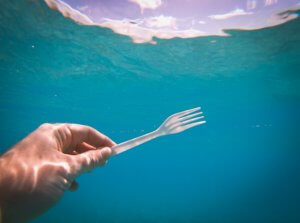
Plastic cutlery is one of the most deadly plastics for sea turtles, birds and marine animals.
Sharp, highly likely to be contaminated, and commonly found in waterways, these plastics can cause serious injuries. Seabirds and turtles who eat the plastic pieces get internal injuries and poisoning.
Less than half of plastic utensils thrown away are recycled.
Did you know? Albatross are more prone to eating plastic because they fish by skimming their beaks across the water’s surface, scooping up plastic as well as fish.
3. Plastic Straws and Drink Stirrers
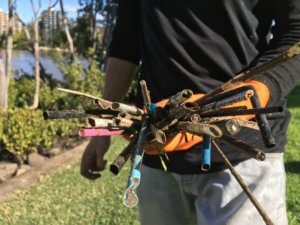
Straws are a notorious killer of ocean animals. Lightweight and easily blown away, straws end up in waterways and flow straight out into the ocean.
They can cause serious injuries when they get stuck in noses or airways. Did you know? An estimated 10 million straws are used in Australia every day, and they take up to 200 years to break down.
4. Plastic Fruit and Vegetable Bags
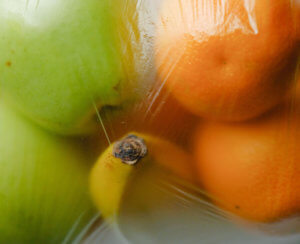 Yes – all that soft plastic packaging at the supermarket really is bad for the environment! Wasteful soft plastics like fruit & veggie bags at the supermarket are dangerous for ocean animals. Like shopping bags, these soft plastics are rarely recycled and they easily blow away into waterways.
Yes – all that soft plastic packaging at the supermarket really is bad for the environment! Wasteful soft plastics like fruit & veggie bags at the supermarket are dangerous for ocean animals. Like shopping bags, these soft plastics are rarely recycled and they easily blow away into waterways.
Even whales and big mammals can swallow them, where they tangle up around other items and become life-threatening blockages.
5. Balloons and Balloon Sticks
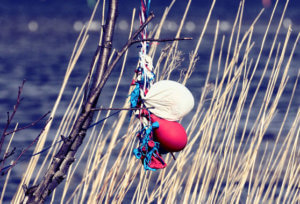
Balloons are incredibly dangerous – they are one of the most common items found in the stomachs of dead animals. Hard to digest and stretchy, balloons wrap around other items in stomachs and cause starvation.
Plastic products like balloon sticks break down into small pieces that look like food. Strings and ribbons from balloons strangle turtles and animals who get caught in these killer traps.
Did you know? Balloon pieces are the biggest plastic killer of seabirds.
6. Plastic Bottles and Lids
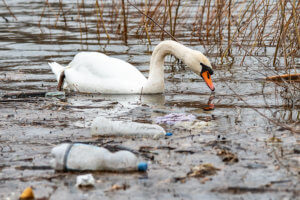 Plastic bottles and lids litter our coasts and seas. Although recyclable, too many end up in landfill or the oceans.
Plastic bottles and lids litter our coasts and seas. Although recyclable, too many end up in landfill or the oceans.
In the sea they float on the surface, or break up into small pieces. Seabirds will mistake bottles or their lids for food, and animals of all sizes will accidentally eat the plastic pieces.
Did you know? It can take up to 3L of water to make 1L of bottled water.
7. Plastic Takeaway Containers
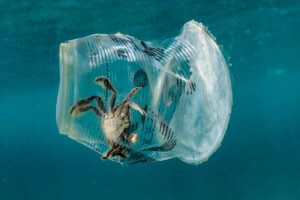
Noel Guevara / Greenpeace
Brittle and sharp, plastic takeaway containers break down into sharp pieces that are eaten by wildlife – causing internal injuries.
Sometimes plastic containers develop holes that marine life can get stuck in.
Takeaway containers are highly likely to also carry the risk of contamination. They can move around the planet, enter huge floating garbage patches, even reach far flung beaches.
8. Polystyrene Containers and Products
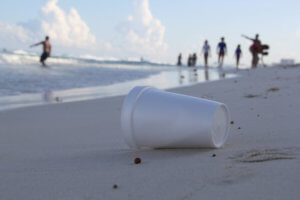 Polystyrene is commonly found in the environment because it’s not biodegradable and it’s difficult to recycle. Composed of about 95% air, expanded polystyrene products travel long distances on the wind or water.
Polystyrene is commonly found in the environment because it’s not biodegradable and it’s difficult to recycle. Composed of about 95% air, expanded polystyrene products travel long distances on the wind or water.
Its soft structure means it fragments easily into pieces, which birds, fish and mammals love to eat. Hard to digest, it slowly starves animals to death.
Did you know? Seabirds feed these plastic pellets to their baby chicks, mistaking them for food.
9. Plastic Lined Coffee Cups and Lids
 You might be surprised to know that disposable coffee cups have a thin plastic lining to prevent liquids leaking, making them difficult to recycle. The lids are made from varying types of single-use plastic, which rarely get recycled.
You might be surprised to know that disposable coffee cups have a thin plastic lining to prevent liquids leaking, making them difficult to recycle. The lids are made from varying types of single-use plastic, which rarely get recycled.
In the ocean the cups and lids break up into pieces that look like food. Fish will eat the tiny plastic particles, and eventually those particles can make their way back into our food chain.
Did you know? Australians throw out 2.7 million disposable coffee cups every single day!
10. Disposable Plastic Cups, Plates and Bowls
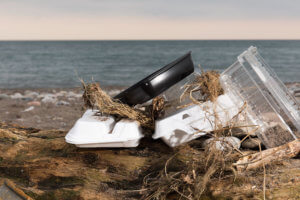 Plastic cups, plates and bowls seem convenient, but they are rarely recycled like we think they are. Even if they make it into the recycling bin, they often can’t be sorted at recycling centres due to their unusual shape.
Plastic cups, plates and bowls seem convenient, but they are rarely recycled like we think they are. Even if they make it into the recycling bin, they often can’t be sorted at recycling centres due to their unusual shape.
Easily blown into our waterways, they harm turtles and wildlife who eat the plastic pieces.
Did you know? It can take up to 450 years for plastic cups to decompose.
What about ghost nets and abandoned fishing gear?
While they are not an everyday plastic product you can give up, discarded fishing nets, often called ghost gear, are also a type of deadly ocean plastic. Lost and abandoned gillnets, trawl nets and crab pots are designed to catch and kill wildlife and they are very lethal when floating in the ocean. This dangerous material lasts for many years floating in the ocean, and is estimated to make up as much as 10% of all plastic in the ocean.
In the Northern Territory, through the Keep Top End Coasts Healthy alliance, we have been supporting Aboriginal Ranger Groups to tackle the tide of marine debris washing up on their otherwise pristine coast, including ghost nets washing up from international waters.
Ultimately the threat of ghost gear and abandoned fishing nets is a global problem, and we need a global solution. We are fighting to get Australia to take a leading role in pursuing a Global Oceans Treaty to ensure that human activities are strictly assessed and properly managed, so that issues like lost fishing gear are considered when allowing fisheries to operate in international waters.
Learn more about our critical work on fisheries here.
The solution to plastic pollution
With safer, non-toxic and earth friendly alternatives available, it’s time to ditch these dangerous plastic products. You have the power to create healthy oceans, full of life.
The UK, Canada and the European Union have already introduced laws to ban plastics like disposable cutlery and straws. It is time for Australia to do the same.
